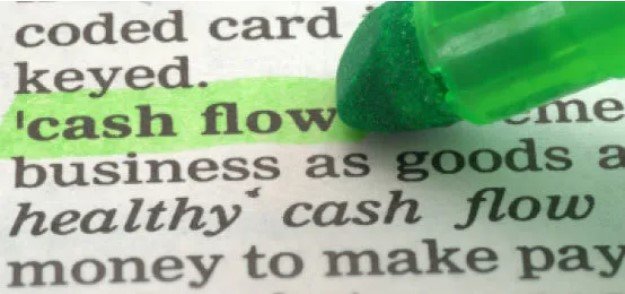Several years ago, the business I owned at that time was struggling and finding cash just to operate was a daily problem. Needless to say, I wasn’t sleeping very well. One day, my CPA called and said the company’s tax return was ready and wanted me to stop by and go over it. When I arrived at his office, he had a big smile on his face as he extended his arm to shake my hand.
“Fantastic job,” he said, “you’ve really turned this company around and I’m impressed how profitable it now is.”
Me, profitable? I had just been wondering how I was going to find enough cash to make payroll on Friday. I decided to come clean with him.
“The truth is, I probably don’t deserve your praise because I don’t have enough cash to make payroll on Friday and I’m really not sure I can keep the doors open for much longer,” I said looking down in shame. “How can I be profitable when I don’t have any money? Where did it all go?”
He was quiet for a few moments. Slowly, he picked up the tax return and slipped it into a big white envelope with his company logo emblazoned on it and placed it on the desk in front of me.
“Do you know the difference between cash and profit?” he asked quietly.
“What do you mean? Aren’t they the same?”
“Not at all,” he said. “Let me explain. Profit is only an accounting term used to define the result of the accounting equation: Sales minus cost of sales and expenses equal profit. It’s very simple. We sell something, pay our bills and whatever is leftover we call profit.”
“Cash, however, is not generated by some equation. Cash is generated only through the receipt of cash in some manner, either through sales, borrowing or taking in investment dollars. When we pay our expenses, whether they are for equipment, materials, labor or taxes, we must use cash to do so. For example, when your company gets a new contract, you usually have to buy about $20,000 worth of equipment to place at the new customer’s location before you get the first new sales dollar. And, you need to pay those suppliers off in about 60 days, correct? And, you won’t bring in enough profit in those 60 days to pay that bill, correct?” He paused so I could think about this.
“Now, on your profit and loss statement, it will show that you had both an increase in sales and an increase in profit. You as the business owner spend most of your time trying to grow your business by increasing customers and sales. The problem, and one that most business owners fail to realize, is that increased sales cost money.”
“Most businesses need new assets to support an increase in sales and these new assets need to be paid for usually before the new sales can generate sufficient profit to cover the increased cost. Sometimes it is new equipment, new staff or a big order of materials. Sales growth has to be planned and, fortunately, there are tools that you can use to make sure you can afford to grow and take advantage of new opportunities.”
“Let me ask you this,” he asked, “how do you decide what bills to pay and when?” he asked.
“Well, lately I go online and check the bank balance and will pay whoever is calling and threatening the most,” I said being very honest.
“That’s what I thought,” he chuckled. “Cash is the most precious resource that any business possesses. You have to plan carefully who you pay this week as well as the rest of the month, next three months and the year. The only way to do this is to forecast your cash inflows and outflows on a weekly and plan 13 weeks forward. It can be hard at first, but if you do this habitually, you will be able to predict when you will be short on cash and hopefully find ways around the shortfall.”
“You mentioned ‘tools’ that I should be using to plan my cash inflows and outflows. What are they?” I asked.
He pulled out a single piece of paper from the top drawer of his desk and handed it to me. It was a copy of a spreadsheet with 14 columns and was full of numbers.
“This is my firm’s cash forecast and we use it every week. I’ll send you a blank template that you can customize for your company,” he replied. “Try it for a couple of weeks and if you get stuck, give me a call and I’ll help,” he said as he stood up.
I knew my time was up and shaking his hand, I thanked him again and again.
This is a true story and learning how to forecast my cash inflows and outflows allowed me to grow my business methodically and kept me sane. If this is your story too, send me an email and I will be happy to send you a template that you can use to forecast your cash. If you need help to get started, call our office. Once I started using the template, it wasn’t long before I was sleeping much better.
David Oetken
Director Louisville SBDC
Director Louisville SBDC

